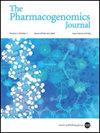药物靶点与人类微生物组元蛋白质组的相似性促进了药理学的混杂。
IF 2.9
3区 医学
Q2 GENETICS & HEREDITY
引用次数: 0
摘要
通常评估候选药物靶点与人类蛋白质之间的相似性,以尽量减少副作用的发生。尽管已经发现许多药物会破坏人类微生物组的健康,但尚未对既定药物靶点与人类微生物组元蛋白质组进行全面比较。因此,本文对人类和病原体药物靶点与具有代表性的人类肠道、口腔和阴道微生物组元蛋白质组进行了序列和结构比对。研究发现,人类和病原体药物靶点在序列、功能、结构和药物结合能力方面与来自所有三种微生物组的多种致病性和非致病性细菌的蛋白质相似。肠道元蛋白质组被认为特别容易受到脱靶效应的影响。某些症状,如感染和免疫紊乱,在非选择性靶向宿主微生物群的药物中可能更常见。这些发现表明,人类微生物组元蛋白质组和候选药物靶点之间的相似性应该定期检查。本文章由计算机程序翻译,如有差异,请以英文原文为准。

Similarity of drug targets to human microbiome metaproteome promotes pharmacological promiscuity
Similarity between candidate drug targets and human proteins is commonly assessed to minimize the occurrence of side effects. Although numerous drugs have been found to disrupt the health of the human microbiome, no comprehensive comparison between established drug targets and the human microbiome metaproteome has yet been conducted. Therefore, herein, sequence and structure alignments between human and pathogen drug targets and representative human gut, oral, and vaginal microbiome metaproteomes were performed. Both human and pathogen drug targets were found to be similar in sequence, function, structure, and drug binding capacity to proteins in diverse pathogenic and non-pathogenic bacteria from all three microbiomes. The gut metaproteome was identified as particularly susceptible overall to off-target effects. Certain symptoms, such as infections and immune disorders, may be more common among drugs that non-selectively target host microbiota. These findings suggest that similarities between human microbiome metaproteomes and drug target candidates should be routinely checked.
求助全文
通过发布文献求助,成功后即可免费获取论文全文。
去求助
来源期刊

Pharmacogenomics Journal
医学-药学
CiteScore
7.20
自引率
0.00%
发文量
35
审稿时长
6-12 weeks
期刊介绍:
The Pharmacogenomics Journal is a print and electronic journal, which is dedicated to the rapid publication of original research on pharmacogenomics and its clinical applications.
Key areas of coverage include:
Personalized medicine
Effects of genetic variability on drug toxicity and efficacy
Identification and functional characterization of polymorphisms relevant to drug action
Pharmacodynamic and pharmacokinetic variations and drug efficacy
Integration of new developments in the genome project and proteomics into clinical medicine, pharmacology, and therapeutics
Clinical applications of genomic science
Identification of novel genomic targets for drug development
Potential benefits of pharmacogenomics.
 求助内容:
求助内容: 应助结果提醒方式:
应助结果提醒方式:


